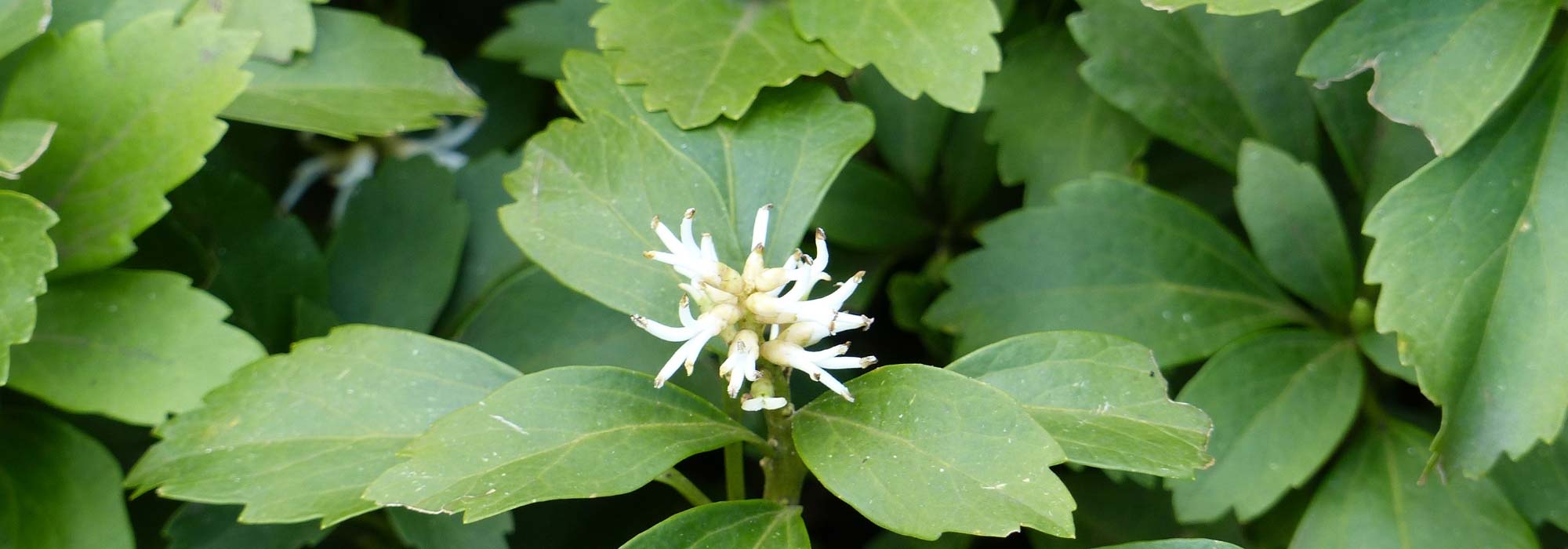
Pachysandra terminalis: planting, growing, care
Contents
Pachysandra in a nutshell
- Pachysandra terminalis is an outstanding groundcover with evergreen foliage, ideal for shady spots
- It produces a discreet flowering of lovely pure white in late spring
- Hardy, easy to grow in garden or even in a pot in most regions
- A reliable choice that requires almost no maintenance and is never invasive
- It will find its place on the woodland floor, in shaded beds or borders, dressing the base of hedges or the edge of a cool copse
A word from our expert
Pachysandra is an effective evergreen ground cover forming superb tapetum, dense and glossy all year round.
It is one of the few perennials able to rival ivy in woodland understorey.
Its foliage, plain green in Pachysandra terminalis ‘Green Carpet’ or variegated in Pachysandra terminalis ‘Variegata’ and ‘Silver Edge’, is leathery and glossy. It bears small white flowers in late spring.
This hardy ground cover and accommodating plant prefers cool soil: it is the perfect plant to carpet slightly neglected and shaded areas of garden.
This perennial with robust character will find its place in woodland understorey, dressing bases of hedges or edges of a copse, and carpeting paths and dimly lit borders.
Grow Pachysandra, this ground cover attractive all year round, and it will save you the chore of weeding!
And discover all our evergreen ground-cover perennial plants!
Description and botany
Botanical data
- Latin name Pachysandra
- Family Buxaceae
- Common name Pachysandra, Japanese pachysandra
- Flowering May-June
- Height 0.15 to 0.30 m
- Exposure Shade, partial shade
- Soil type All, well-drained
- Hardiness -15°C
Pachysandra, also called “Japanese pachysandra”, is a perennial groundcover or an undershrub growing in forests of China and Japan. It belongs to family Buxaceae, like its cousin box.
Only one species is commonly found in gardens, Pachysandra terminalis, which comes in about a dozen varieties. Pachysandra procumbens is a little-known species.
This suckering perennial spreads via its rootstocks, fleshy green roots that are not very running. It forms a compact carpet with a spreading habit, very regular and homogeneous. Its creeping stems can layer spontaneously, allowing it to form over time a large groundcover reaching up to 30 cm tall and 60 cm across.
Pachysandra is one of the hardy species that grow relatively slowly. It takes time to establish and needs about three years to become well established, regrowing each year from its stump, without ever becoming invasive.
The glossy, evergreen and leathery foliage is the main attraction of this groundcover close to box.
Leaves are alternate, grouped in clusters at the tips of short erect, glabrous shoots. Ovate, glossy, slightly dentate along the margins, 5 to 10 cm long, they bring light and brightness, efficiently carpeting even the smallest shaded nook. Foliage is dark glossy green, finely marginate with silver in ‘Silver Edge’ or variegated with cream in Pachysandra terminalis ‘Variegata’.
But this dense vegetation attractive all year round is not its only asset! A delicate and very discreet white flowering appears in early summer, in May-June, on this pretty green carpet. Flowers form elegant spikes 2 to 3 cm long, cream-white to greenish-white, discreetly scented, grouped at the ends of the stems. Female flowers are smaller and petal-less, while male flowers show large white stamens tinged with brown.
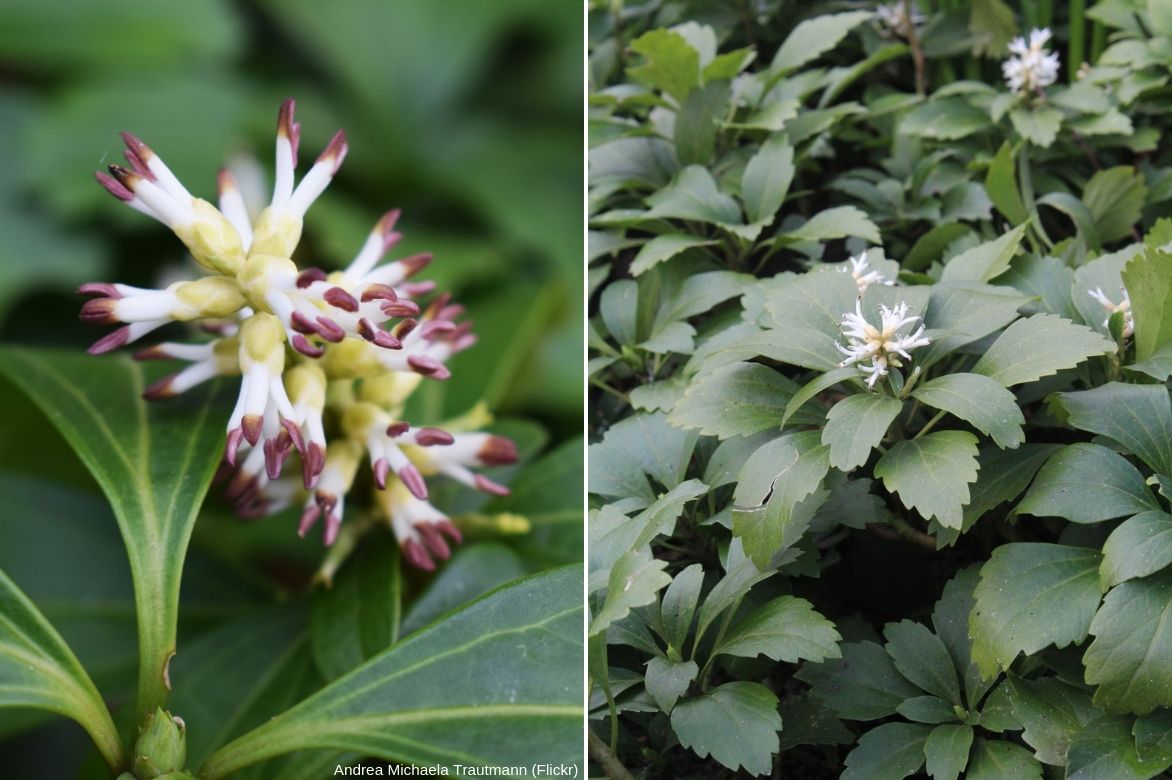
Pachysandra terminalis: flowers and leaves
These panicles appear at the centre of each clump well above the foliage and sometimes produce very discreet opalescent white fruits.
Very hardy, Pachysandra tolerates temperatures around -15°C and adapts to all regions. It prefers shade or partial shade, as it dislikes direct sun. Undemanding, while it will make do with ordinary, not-too-dry soil, it grows better in fresh, humus-bearing soil.
This evergreen perennial is indispensable in all shady parts of the garden that are difficult to plant. This groundcover is ideal in woodland understorey under bushes or to bring light to awkward, forgotten corners under trees and hedges, as well as along edges of paths or beds with little light.
Read also
Planting perennials and shrubsMain species and varieties
With its glossy, uniform green foliage, Pachysandra terminalis is the species most commonly encountered in our gardens. It declinates into around ten varieties with a more-or-less carpeting habit and, above all, foliage variegated with white or marginate with silver.
Most popular
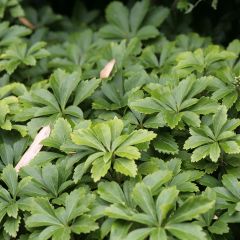
Pachysandra terminalis - Japanese Spurge
- Flowering time July
- Height at maturity 30 cm
Our favourites

Pachysandra terminalis Variegata - Japanese Spurge
- Flowering time April, May
- Height at maturity 30 cm
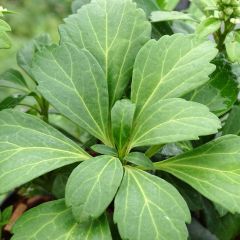
Pachysandra terminalis Green Carpet - Japanese Spurge
- Flowering time July
- Height at maturity 15 cm
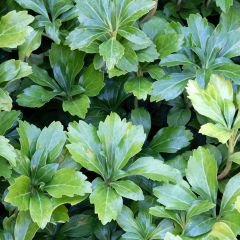
Pachysandra terminalis Green Sheen - Japanese Spurge
- Flowering time July, August
- Height at maturity 20 cm
Discover other Pachysandra
View all →Available in 2 sizes
Available in 1 sizes
Available in 2 sizes
Available in 2 sizes
Planting Pachysandra
Where to plant Pachysandra?
Hardy, the Pachysandra tolerates temperatures down to -15 °C, as well as periods of drought. It therefore establishes easily throughout France. Despite dense foliage, it fears only one thing: full sun, especially south of the Loire. In those regions, it must be planted out of direct sunlight, which damages its foliage.
It is the ideal groundcover for shade or partial shade! It is so undemanding that it is often used in awkward corners of the garden where few plants will grow. It adapts to all soil types, neutral to acidic, even clayey, but will establish more quickly in humus-bearing, well-drained soil that stays cool in summer.
A small but effective and versatile groundcover for greening poorly exposed areas, it also saves on weeding because it has the useful habit of smothering weeds.
Unobtrusive, it will not hinder neighbouring plants, even tolerating tree roots. An understorey, woodland edge or even beneath very dense, dry shade of large trees will suit it perfectly.
This ground-hugging plant is unrivalled for flowering a paved area, dressing the base of a tree or a hedge or a cool rockery. It also finds its place as edging for paths and borders. In small urban gardens, Pachysandra helps hide the base of walls while requiring little care.
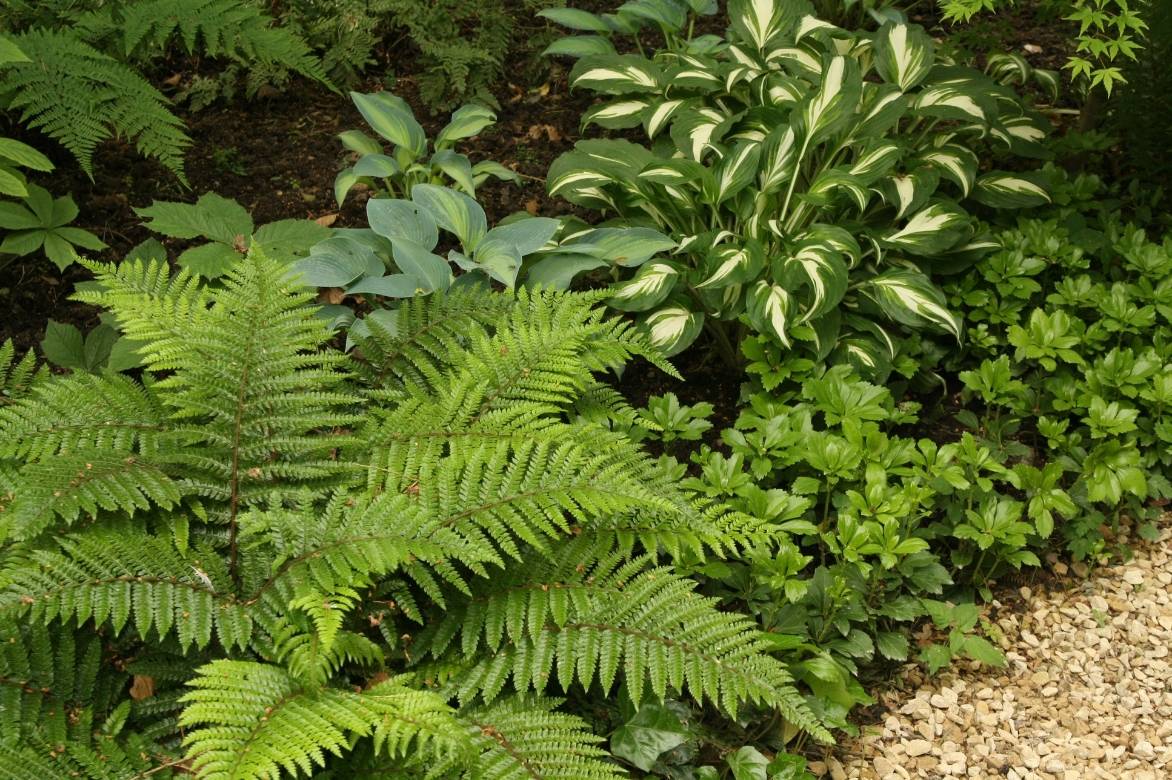
Pachysandra terminalis, well surrounded by shade plants
When to plant Pachysandra terminalis?
Planting Pachysandra is done in spring from February to April or in autumn from September to November, avoiding periods of frost and drought.
How to plant Pachysandra?
In the ground
This suckering perennial, a little slow to establish at first, will form a well-filled evergreen cushion all year round. Plant in groups of 4 to 7 plants per m², no more or the plants may smother one another.
- Dig a hole slightly larger than the rootball
- Create a good draining bed of gravel at the bottom of the planting hole
- Backfill with the excavated soil mixed with compost
- Firm lightly
- Water generously to aid establishment
- Mulch the soil with an organic mulch
In a pot
Planting Pachysandra in a pot is possible; it will form a compact, homogeneous bush on a shaded terrace or balcony.
- In a container of about twenty litres lined with a draining layer of clay pebbles, plant in a mix of potting compost and compost
- Mulch and water regularly to keep the soil cool
Pruning and care of pachysandra
Really easy to grow, Pachysandra is unobtrusive. It requires virtually no maintenance.
Make sure it does not lack water during its first two summers to encourage its spreading. Afterwards, water only in very hot, dry weather.
First year, mulch soil with an organic mulch (bark or pine needles) to keep its roots cool during summer heat. Once well established, it will better tolerate brief drought.
In a pot, water more regularly to keep the growing medium slightly cool.
In autumn, optionally add a little compost by lightly scratching the surface at the base of the plant.
It is easy to control its spread if it becomes too vigorous: using pruning shears, cut some shoots or pull up a few plants.
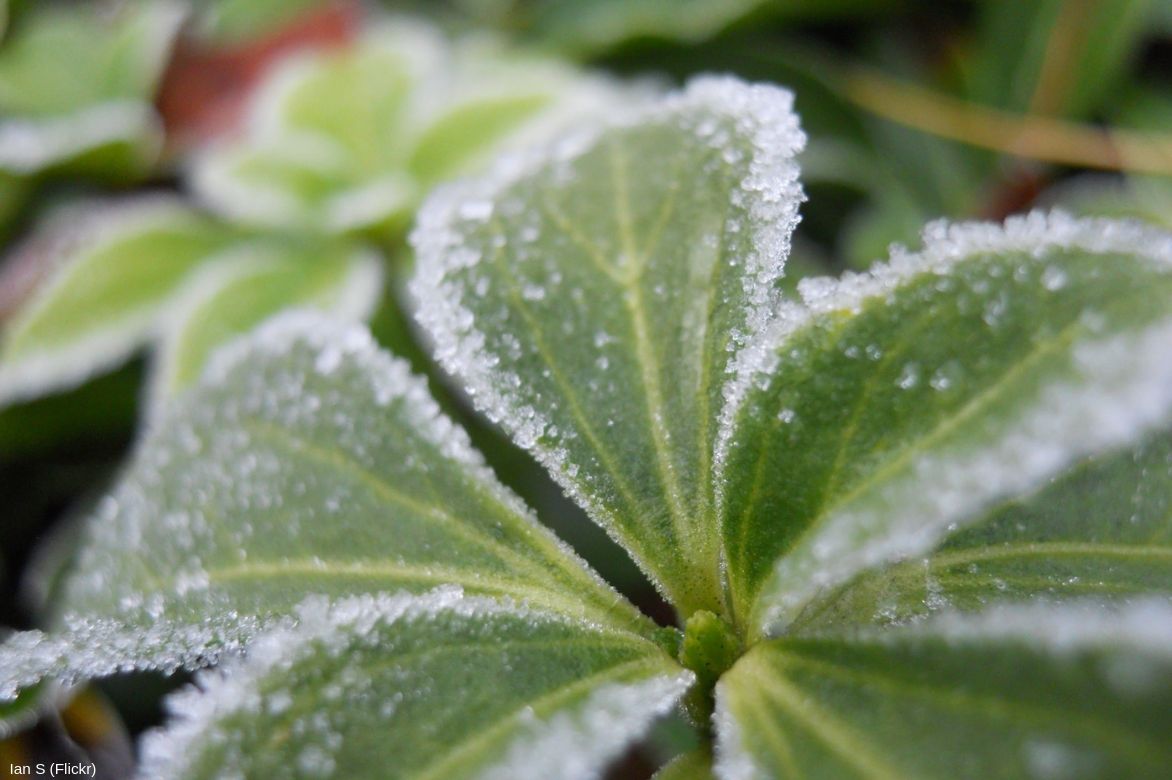
Foliage of Pachysandra terminalis enhanced by frost
Potential diseases and pests
Once well rooted, Pachysandra has no particular pests. Only slugs and snails threaten its young foliage during establishment. Take inspiration from our advice to deter them naturally and discover our 7 ways to fight slugs effectively and naturally and how to make a slug trap.
Propagation
Pachysandra multiplies easily by division of clumps in spring or by herbaceous cuttings in June.
Division of stumps
- With a spade, lift a few young plants with roots
- Replant immediately in garden in well-drained, fresh soil
Taking herbaceous cuttings of Pachysandra
- Cut a stem below a leaf or below an eye
- Remove lower leaves
- Plant in individual buckets containing a mix of garden soil, compost and river sand
- Keep cuttings regularly moist until rooted
- Plant them out in open ground in autumn
Uses and companion planting in the garden
Versatile, the Pachysandra adapts to all gardens; shade garden, cottage garden and even a Japanese-style or contemporary garden with its sober character. It is inseparable from shaded corners where it forms neat cushions of evergreen leaves at the base of bushes or deciduous trees. It will leave shimmering patches of green throughout winter once the trees have lost their leaves.
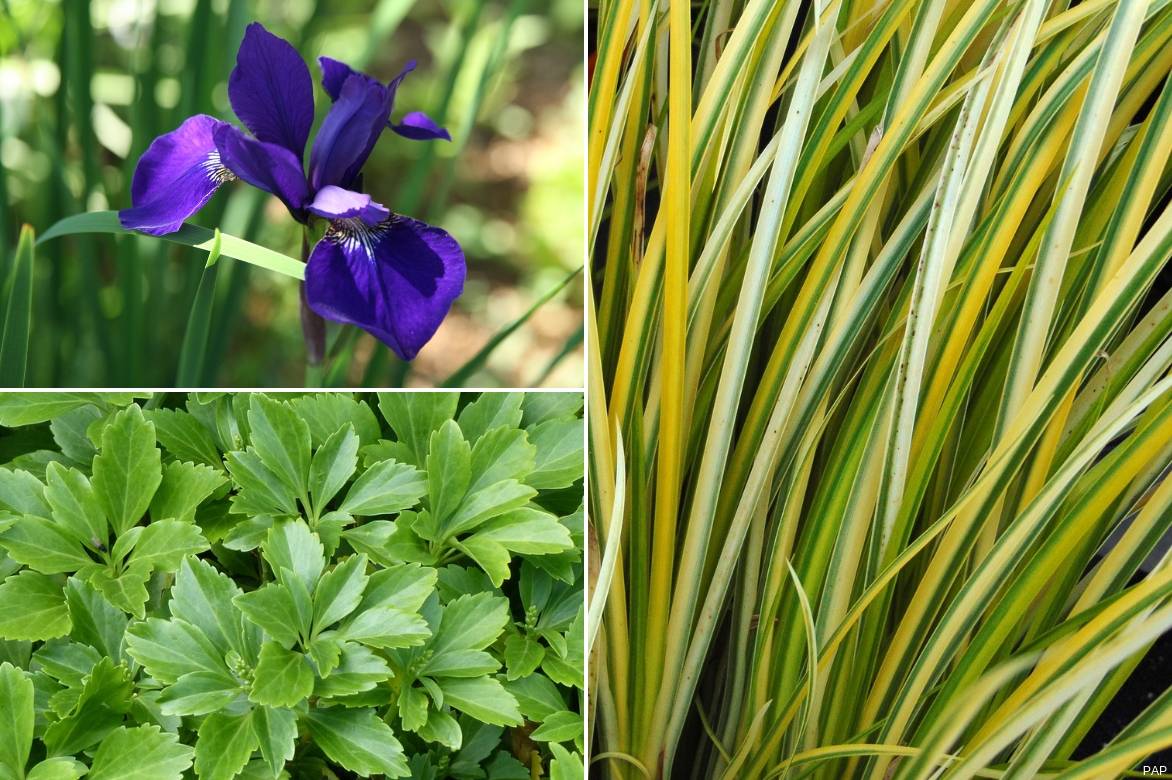
An idea for a Japanese-style combination: Iris sibirica ‘My Love’ (or ‘Blue King’ or Japanese Iris, which flower a little later), Acorus gramineus ‘Ogon’, Pachysandra terminalis and mossy stones
At the edge of a bushy bed, it can be paired with bushes with evergreen foliage such as Aucubas, Daphne and Mexican orange. It will accompany spring flowering of Magnolias, Deutzias, spiraeas, lilacs or flowering apple trees.
It will cover the base of a semi-evergreen perennial such as Lavatera.
With Geranium macrorrhizum (hardy geranium) or other evergreen groundcovers for shade, it will form in spring a tapetum of flowers able to withstand tree roots.
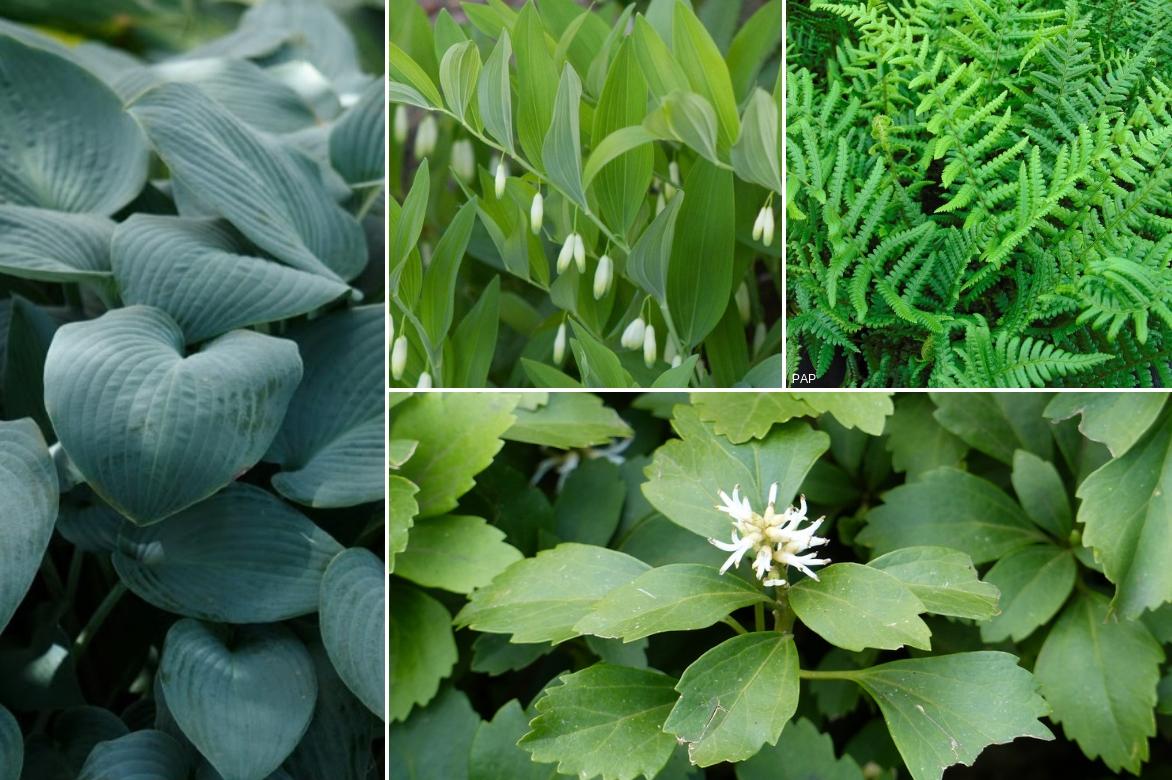
An example of an understorey combination: Hosta ‘Halcyon’, Polygonatum odoratum, Dryopteris affinis and Pachysandra terminalis (‘Green Carpet’ or ‘Variegata’ if you prefer variegated foliage)
In a pretty woodland scene, it will frame Hellebores, winter heathers, Heucheras and small spring bulbs such as daffodils, crocuses, hyacinths, snowdrops and scillas.
In an understorey, it will welcome luxuriant ferns, Hostas and also the delicate, fresh flowering of Solomon’s Seal or fairy flowers.
Useful resources
- Discover our alternatives to grass
- What to plant under my trees?
- 5 new shade perennials, easy to grow
- Flowering for shade: which bushes to choose?
- Advice sheet: 6 perennials for a north-facing garden
- Subscribe!
- Contents
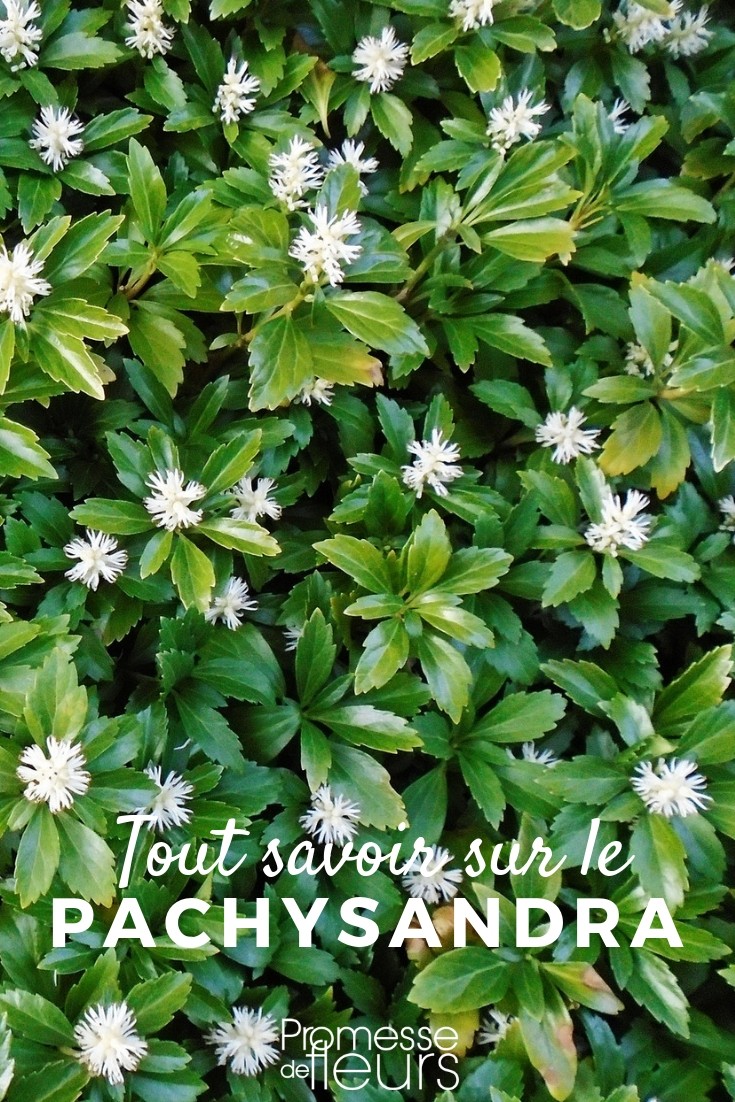
































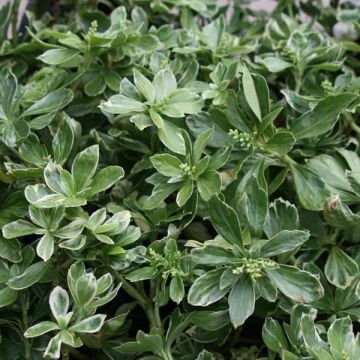


Comments